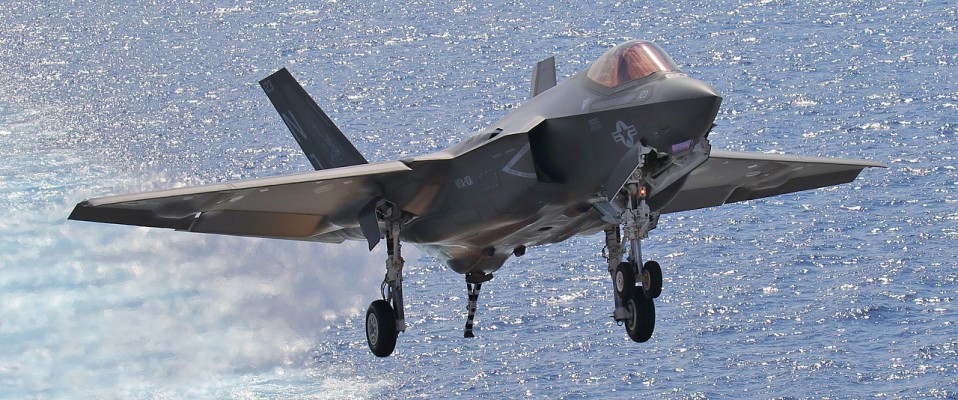F-35C Lightning II JSF Completes Final Round of Carrier Testing
Report, photos and video by Isaac Lebowitz
September 8, 2016
The US Navy has been conducting a series of carrier based developmental tests of the F-35C Lightning II Joint Strike Fighter carrier variant (CV) aboard the USS George Washington (CVN 73). The Navy’s carrier qualifications (CQs) for the third and final phase of its developmental test program (DT-III) were conducted by the Pax River Integrated Test Force (ITF) from Air Test & Evaluation Squadron 23, or VX-23, during a day and a half starting August 14, and its testing took place August 15th through the 25th off the Virginia coast. This is the final round of tests as the platform continues to make progress towards its Initial Operating Capability (IOC). Aviation Photography Digest visited the USS George Washington during DT-III to observe the tests and talk to some of the people involved.
The 5th generation F-35 Lightning II integrates advanced stealth technology into a highly agile, supersonic aircraft that provides the pilot with unprecedented situational awareness and unmatched lethality and survivability. While each aircraft is uniquely designed to operate from different environments, all three variants set new standards in network-enabled mission systems, sensor fusion and supportability. The F-35C combines these unique capabilities while operating from a carrier deck.
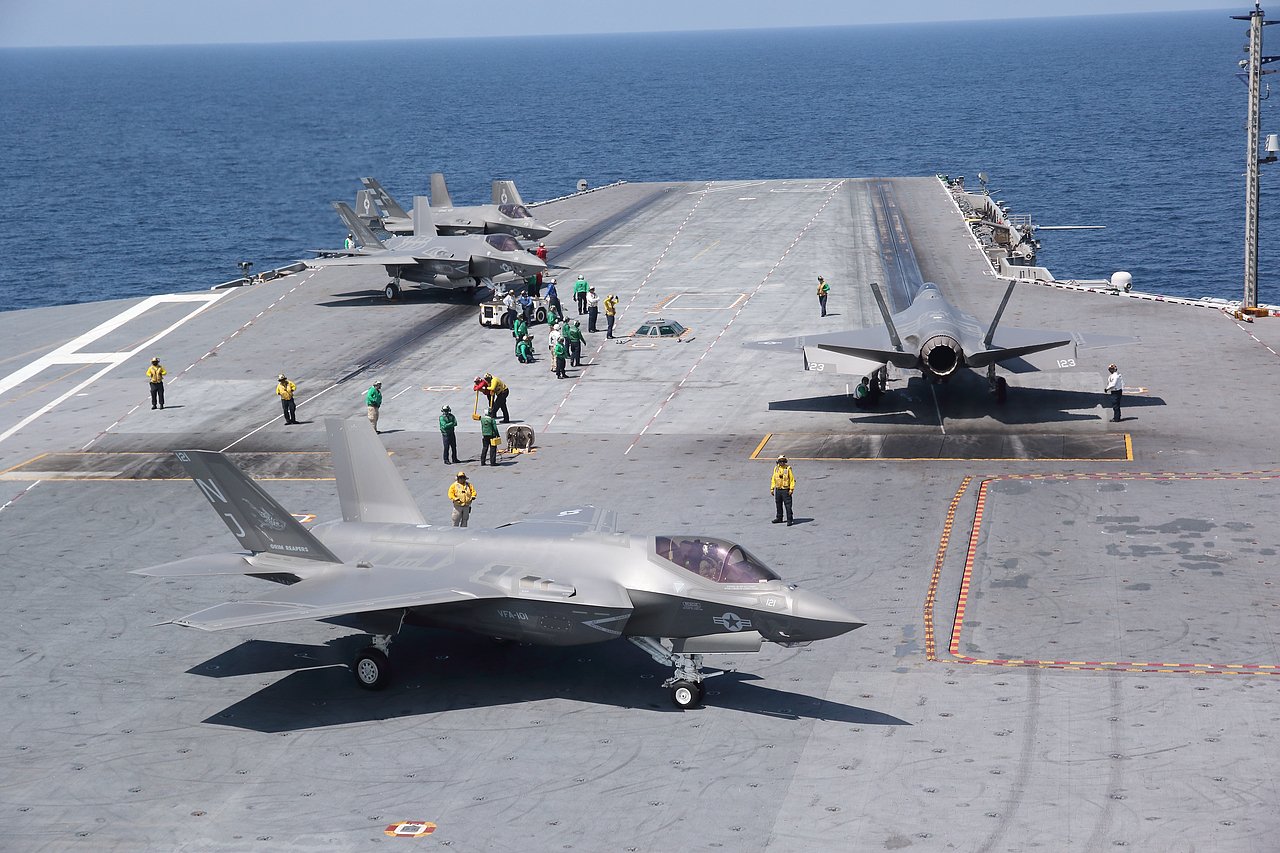
The first development test, DT-I, was held aboard the USS Nimitz in November 2014 off the California coast. During this test, the first carrier landing of the F-35C was accomplished on November 3. The tests were also carried out by VX-23. The goal of DT-I was to test the carrier suitability of the aircraft and its integration with carrier air and deck handling operations in the at-sea environment. Environmental data was collected through added instrumentation to further define the F-35C’s operating parameters aboard the aircraft carrier. Day and night launches and recoveries were also tested.
DT-II was held in October 2015 aboard the USS Dwight D. Eisenhower off the Virginia coast. This series of tests included catapult launches and arrested landings with internal stores up to the maximum aircraft gross weight. Crosswind limits for launch and recovery were also tested, as were minimum energy catapult shots utilizing both afterburner and military power. Max afterburner launches were performed to test the jet blast deflector. Fly away characteristics and hangar bay operations were tested as well. The team also conducted external environment data collection to determine deck crew constraints vs. other aircraft.
The third development test, or DT-III, took place during August 2016 with a new set of tests and goals to accomplish. In describing DT-III, Cmdr. Dave Hecht, public affairs officer for Naval Air Force Atlantic said, “A broad range of elements associated with carrier suitability and integration in the at-sea environment will be tested during DT-III, including day and night CQs, launch and recovery with external stores, approach handling qualities with symmetric and asymmetric external stores, Delta Flight Path testing, Joint Precision Approach and Landing System (JPALS) testing, crosswind and maximum weight launches, military /maximum power launches, and night operations with the Generation III Helmet-Mounted Display.”
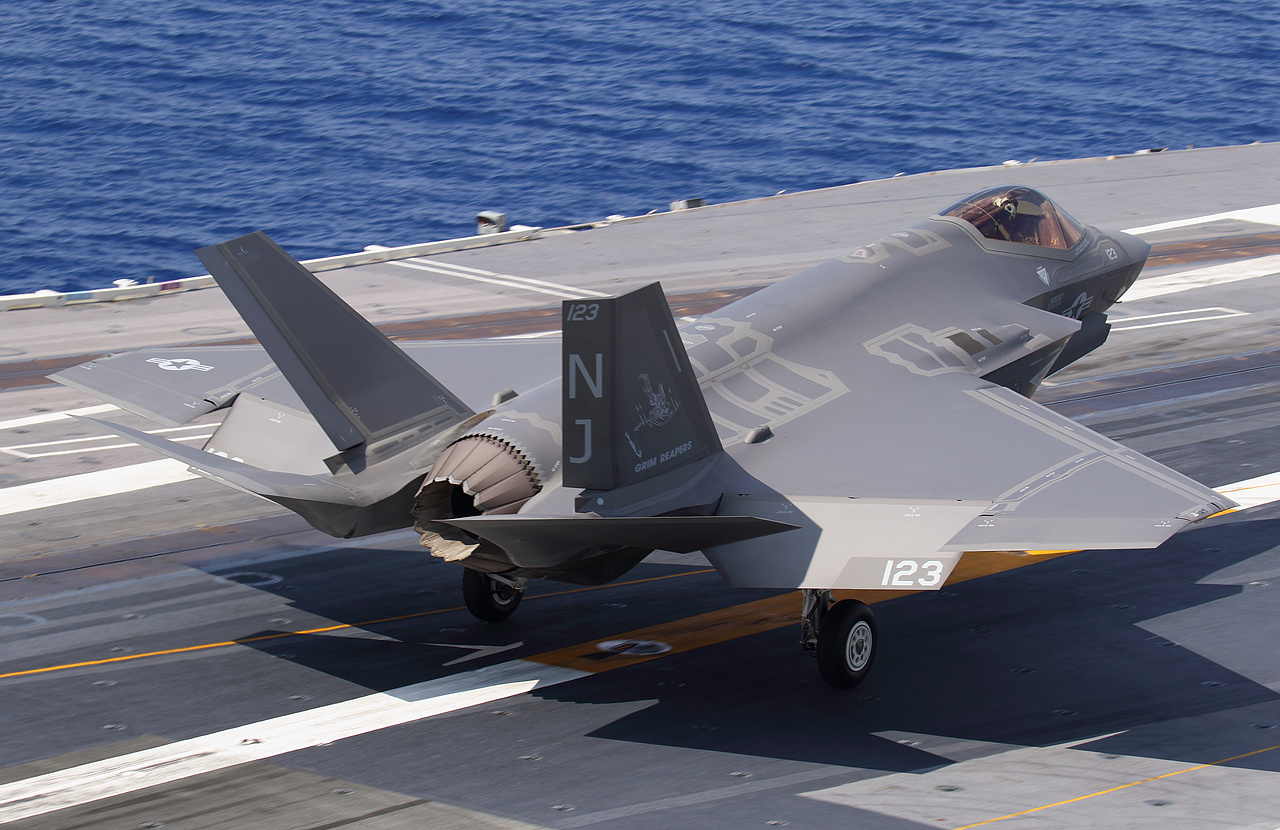
JPALS is a semi-automated landing mode. This system, which is on both the B and C variants of the F-35, is the next generation precision approach system that provides the pilot with the ability to fly a very precise flight path when landing on an aircraft carrier. As explained by Lockheed Martin, “With JPALS, the ship and the aircraft will ‘talk’ to each other. JPALS allows the aircraft’s system to register where it is and which direction it’s going in relation to the ship via a radio frequency (RF) signal so the aircraft can correctly align itself with the ship for landing.”
Delta Flight Path is a revolutionary technology that improves glideslope tracking performance, significantly reduces workload during carrier approaches, and reduces the previously high stress task of landing at the ship to an administrative task. Its cousin is the Maritime Augmented Guidance with Integrated Controls for Carrier Approach and Recovery Precision Enabling Technologies (MAGIC CARPET), which was developed for the F/A-18 Super Hornet.

For the Navy, the F-35 has additional requirements due to operating in a carrier environment. The F-35C variant has larger wings and more robust landing gear than the other variants, making it suitable for catapult launches and traps aboard naval aircraft carriers. Its wingtips also fold to reduce the space required on the carrier’s deck while deployed. In addition, the aircraft has more durable coatings on the external surfaces that enable it to withstand the harsh salt-water laden environment aboard an aircraft carrier.
The F-35C also has the greatest internal fuel capacity of the three F-35 variants. The F-35C carries nearly 20,000 pounds of internal fuel for longer range and better persistence than any other fighter in a combat configuration. And, like the F-35B, the F-35C uses probe and drogue refueling. This allows the Navy to operate its carriers a safe distance from the threat while its fighters reach remote targets.

To bring the F-35C from DT-III to IOC, the Navy has created the Joint Strike Fighter Fleet Integration Office (FIO). This office will be directed by Rear Adm. Roy “Trigger” Kelley who served as Chief of Naval Air Training from 2013 to 2015 and currently commands Carrier Strike Group 12 aboard the USS Theodore Roosevelt. Rear Adm. Kelley explained, “We will stand up the JSF F-35C Fleet Integration Office on September 19th. The idea is we will reach out and connect to all the organizations that have something to do with the F-35C. And then represent the Navy when it comes to interactions as we look at the executive steering boards that are international. The Navy is following a similar model that the Air Force implemented when it stood up their integration office about 2 years prior to IOC. We are about 2 years out from reaching our initial operating capability. We will reach across the services partly because the F-35A and F-35B programs are ahead of us and so there are a lot of good lessons we can gather from them and make sure we’re not relearning hard lessons that they had.”
When asked what the challenges are, he replied “The goal is that we want to reach the IOC and we’ve got a range of dates from August 2018 to February 2019, so my challenge is meeting that timeframe. In other words, bringing the airplane to IOC by then. Part of it is making sure that we have everything the Navy wants in that airplane for IOC, and we’re specific about it. We want Block 3F for the IOC type of aircraft that we’ll be flying at that point. So, I think that the big challenges we have going forward are, number 1, making sure everything aligns; and part of that’s going to be getting through all the operational test requirements, and the other part is bringing on all the support that goes with it. That means having ALIS capabilities at the locations including integrated onboard the aircraft carriers. There are some large moving parts that have to happen yet, and we’ll have to work hard to make sure they do.”
[ALIS is the Autonomic Logistics Information System, it is designed to reduce operations and maintenance costs and increase aircraft availability. ALIS serves as the information infrastructure for the F-35, transmitting aircraft health and maintenance action information to the appropriate users on a globally-distributed network to technicians worldwide.
Block 3F is a software release for the JSF that provides 100 percent of the software required for full warfighting capability, including but not limited to data link imagery, full weapons and embedded training. Mission Systems Block 3F software development is currently 98 percent complete.]

According to Rear Adm. Kelley the next FRS (Fleet Replacement Squadron) will be VFA-125 at NAS Lemoore in California and the first fleet squadron to be deployed is expected to be VFA-147.
We had the opportunity to talk with the VX-23 Detachment Officer in charge of the group onboard the carrier, LCDR Daniel “Tonto” Kitts. He characterized the progress of DT-III as follows “So far things have been going very well both for us and for VFA-101 who have been out here operating with their aircraft and really hitting the target wire, the 3 wire, and they’ve been hitting it almost every single trap. So for my team that’s out here, they’ve been working on the development of this aircraft for a long time, and it is really rewarding for us to come out here and see the hard work in use and making a difference for the fleet. We have brought out 170 people from VX-23. We have five pilots and two airplanes, called Lightning 73 and 75.”
When asked what was needed to consider DT-III successful, LCDR Kitts went on to say “Ultimately what we’re out here to do is to complete the development of the full launch and recovery bulletin for fleet use. So we’ve already done a lot of work on it during our first two boat trips, this time out here we’re going to have weapons on the external stations for the first time. That will get us up to the heaviest gross weights that we need to, the most lateral asymmetry that we need to and clear this aircraft for full fleet use and they’ll have these capabilities at IOC.
“So that’s what we’re out here to do, and that will involve a series of catapult launches, crosswind catapult launches and looking at the handling qualities recovering in different wind conditions in our different approach modes. We’re going to launch the aircraft at 65,000 pounds, which will be the heaviest weight that we’ve launched the aircraft. We will test up to 10,000 foot pounds of asymmetry and make sure that the approach handling qualities are satisfactory with those configurations.
“Our whole test plan encompasses about 600 test points, we have some that we call objective test points and others that we call threshold test points. The objective ones, we have to get done, that’s about 315. The other threshold points we’ll go out and look to do, as long as we have the time, the winds we need for cross-wind testing, and the asset support out here on the George Washington.”
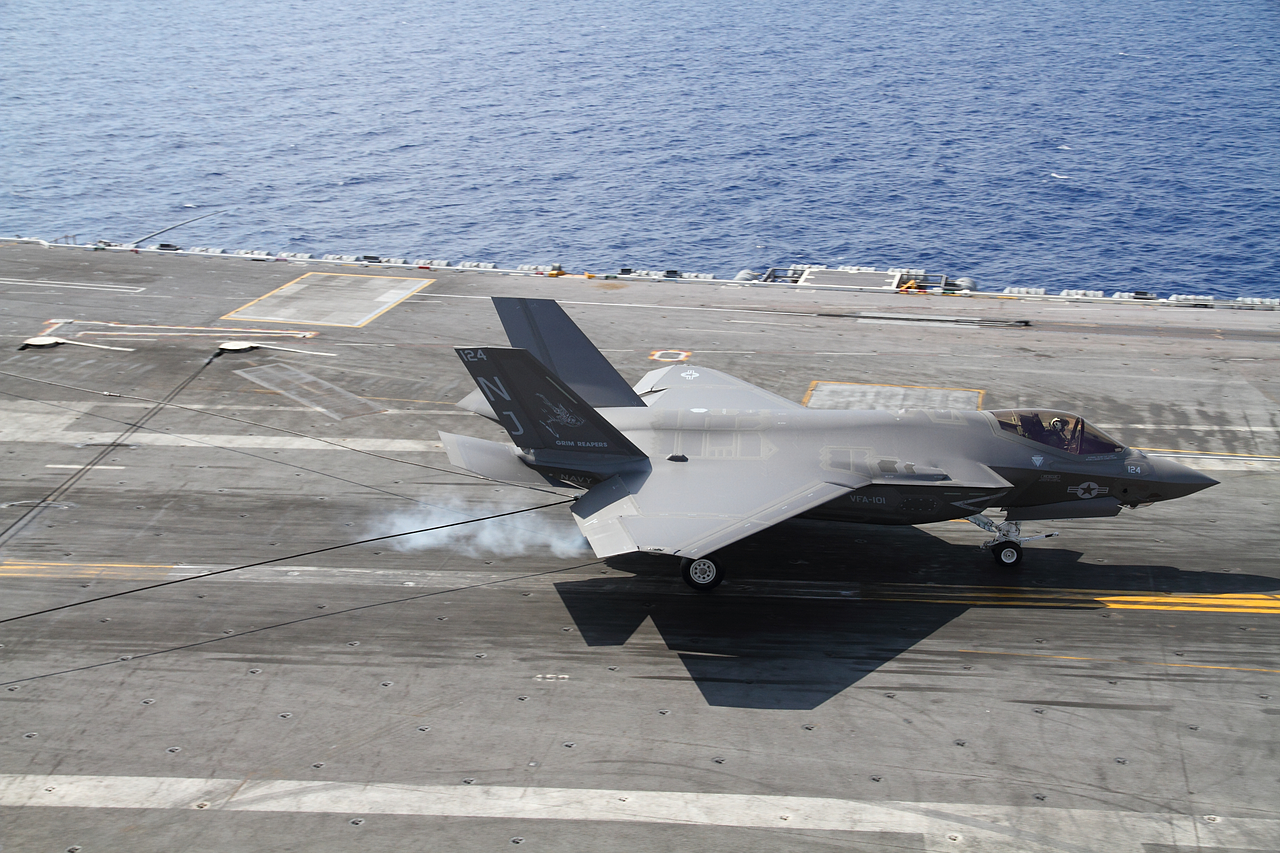
While the VX-23 team was conducting the DT-III testing program, the VFA-101 Grim Reapers from Eglin AFB were also aboard doing their carrier qualifications with five of their aircraft. Twelve Naval Aviators had completed their F-35C carrier qualifications between August 14th and 15th. US Marine Corps pilot Major Eric “Elroy” Northam was part of the VX-23 group that qualified, and was asked about his experience with the F-35C vs. the Legacy Hornet – “In the F-35C we have the Delta Flight Path Mode, which makes it very easy to come aboard. Even if you find yourself with a deviation from the ideal glide path; you can very quickly get back on to the optimal position. The nice thing about that is there is less wear and tear on the aircraft… Before, coming aboard at night was one of the most stressful things I ever do, but now it’s more of a non-factor. It’s a huge upgrade compared to the Hornet and the Rhino. The Rhino has something similar called “Magic Carpet” that’s getting introduced to the fleet in the next couple of months.”
When asked about what he is most excited about what the F-35C will do for him in the battlefield, Maj. Northam replied, “This is the first time we’ll have a stealth platform that we’ll launch from the carrier or land. If you look at the weapons suite that this aircraft has on it and the ability to take information from all kinds of different sources that we have on the aircraft — and also take information from others, whether it’s a strike group or other aircraft that are airborne — synthesize it and provide me a picture telling me exactly who’s good or bad. Then I can relay that information out to the other players out there and to the legacy platforms as well to help their SA [situational awareness] as well.” Although the Marines have squadrons of the F-35B short takeoff/vertical landing (STOVL) variant, they will also be standing up two squadrons of F-35C jets to replace their legacy F/A-18 squadrons.
VFA-101 brought over 70 maintenance personnel plus 12 pilots and five jets. Captain James “Cruiser” Christie, VFA-101 “Grim Reapers” Squadron CO, gave us his assessment, “We brought out 5 airplanes, which are working tremendously well, so it’s really been a near flawless event from our perspective. That’s not just because of VFA-101, but because of the coordination between all the entities involved from the ship, the shore entities as well as from the JPO [Joint Program Office] and Lockheed Martin. It’s really been a tremendous team effort.”
He went on to explain that the VFA-101 program has their own data points to achieve, which are different from the VX-23 test points. “We are looking at it from a fleet perspective, and we want to keep that separation. There’s a very clinical approach to the way DT approaches things as far as test points and meeting spec that they need to do. We’re pushing this from a fleet usability perspective both from people who’ve flown a lot of jets around the carrier over the years, as well as developing our own FRS syllabus to train students. We train people in their initial F-35C qualifications. This data helps us to refine our Carrier Qualification syllabus for pilots that have never flown around the boat before and be able to train them up and bring them out safely.”
Captain Christie also informed us that the VFA-101 maintainers in conjunction with the Pratt and Whitney technicians will be performing an engine swap aboard the carrier on one of their F-35Cs. This is to test the process, systems and logistics.
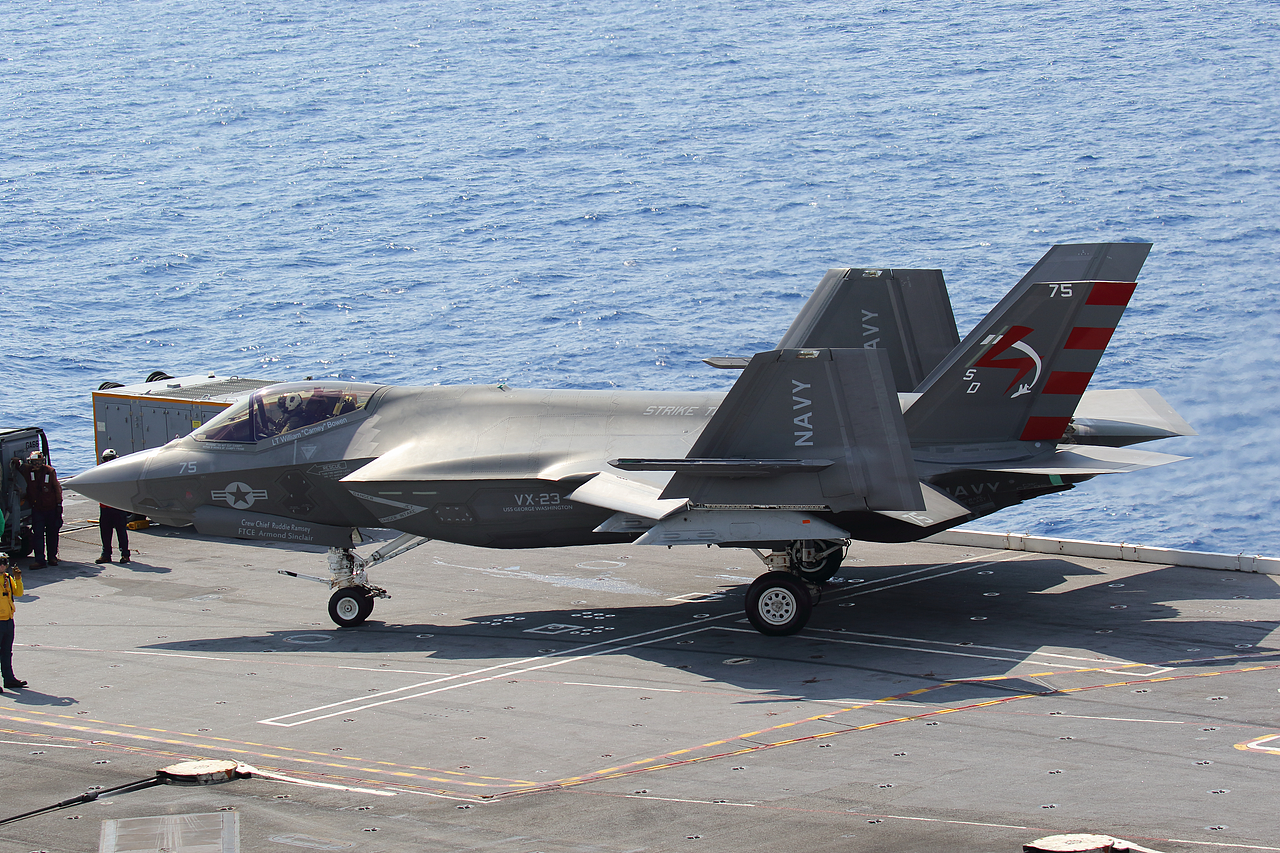
Tom “Briggo” Briggs, the F-35 Naval Variants air vehicle engineering department head at the VX-23 F-35 Lightning II Pax River ITF is also the Chief Test Engineer for this detachment. He discussed some of the weapons testing involving external ordnance. “We’re loading up the test jets with simulated weapons… we will take off and land and evaluate the handling qualities. We’re going to evaluate the compatibility with the ship and the weapons underneath. We’re going to make sure we can take off and land, and then we can generate the next round of aircraft launch and recovery bulletins for the fleet with external weapons.”
He went on, “So why does a stealth aircraft have external weapons? It’s a stealth aircraft for the first week of the war, when you destroy the enemy air defenses. After that when you need to take as many bombs as possible in to prosecute a mission, we can now start to strap weapons under the wings and take more ordnance over target.”
He described the asymmetric weapons loads tests, “We have three separate weapons pylons on each wing. We will hang symmetrically first, GBU-12s under each wing so that we’re balanced when we come off [the carrier]. Then we will take one of those bombs away or move one outboard and keep one inboard so that there is a tendency for that aircraft to want to roll off one way or the other. We’re going to make sure that the aircraft has enough control power to be able to keep those wings level and to be able to come back and land aboard.”
The F-35 Patuxent River ITF completed the DT-III one week earlier than scheduled. VX-23 completed 100 percent of the required DT-III test points during 41 flights logging 39.7 flight hours and featuring 121 catapults, 70 touch and go landings, 1 bolter, and 121 arrestments.
Aircraft carriers remain at the forefront of U.S. military power and the backbone of any carrier strike group is the aircraft it brings to the fight. More than 50 years of aircraft carrier-based fighter evolution has culminated in the F-35C. The F-35C carrier variant is the Navy’s first stealth fighter and the world’s only 5th Generation, long-range stealth strike fighter designed and built explicitly for carrier operations.

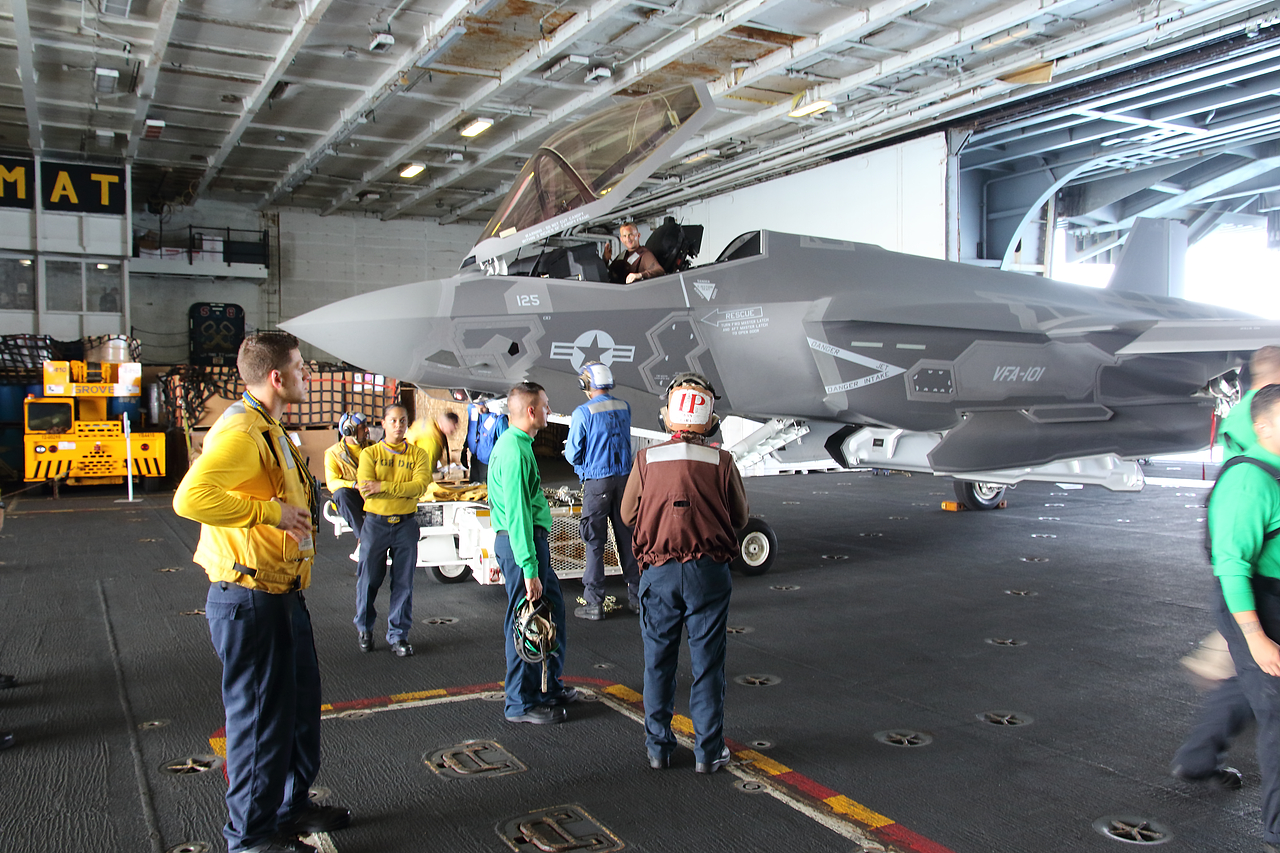
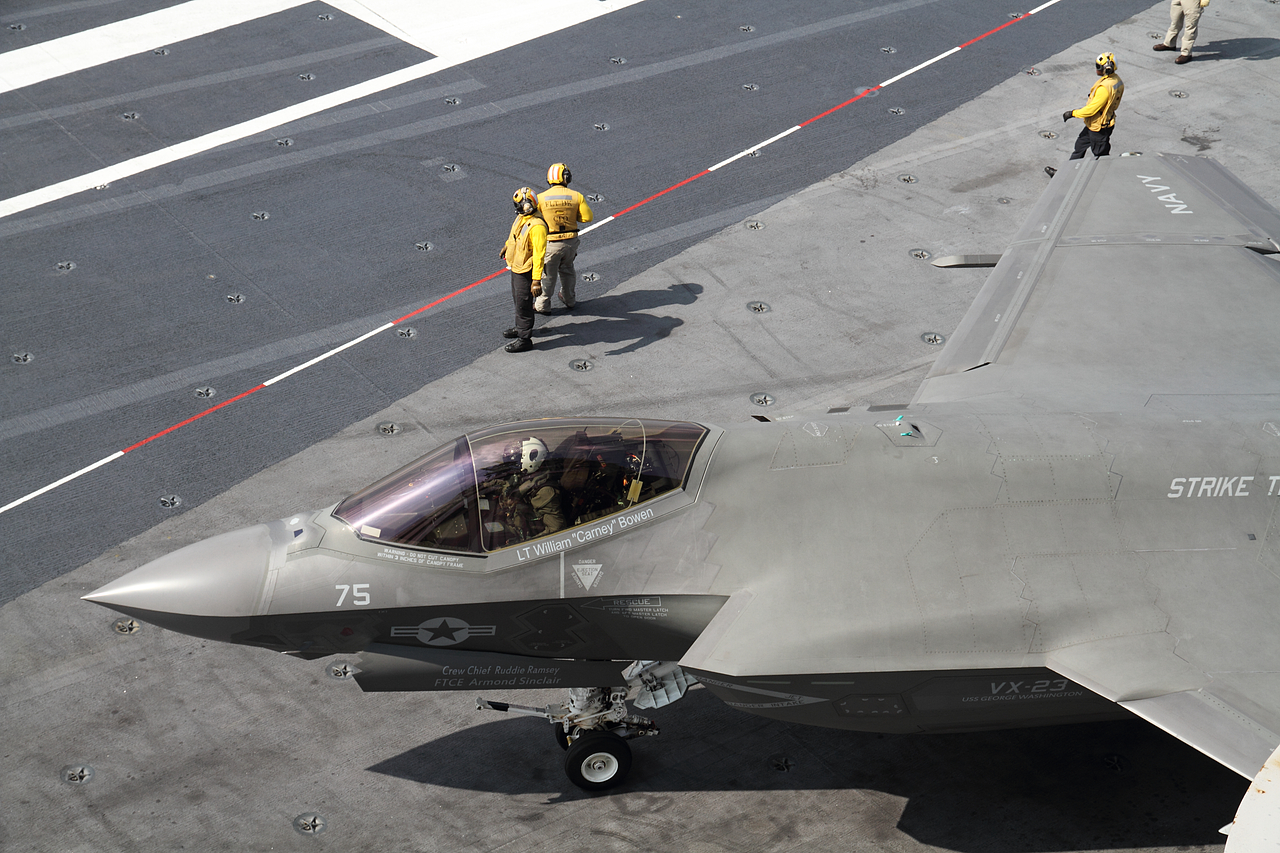
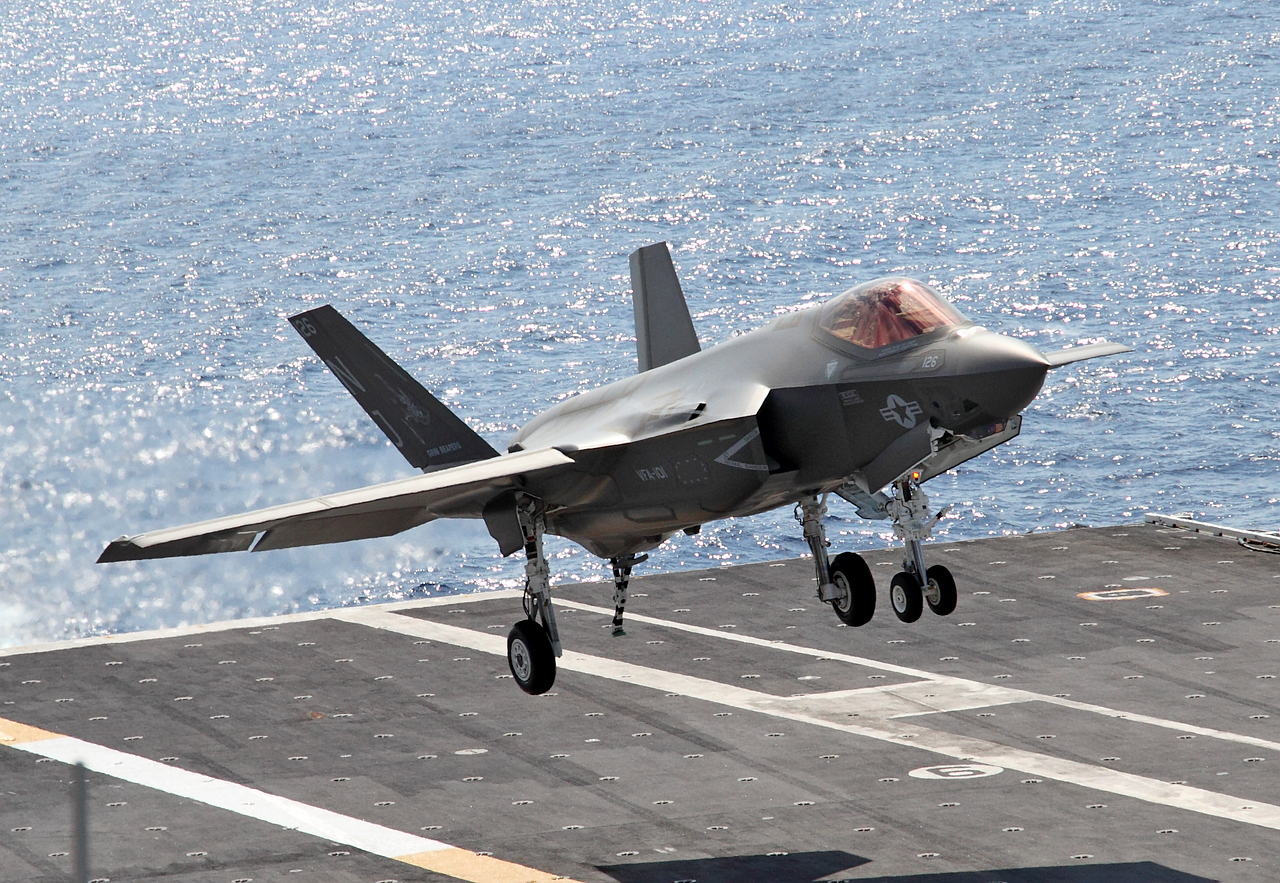
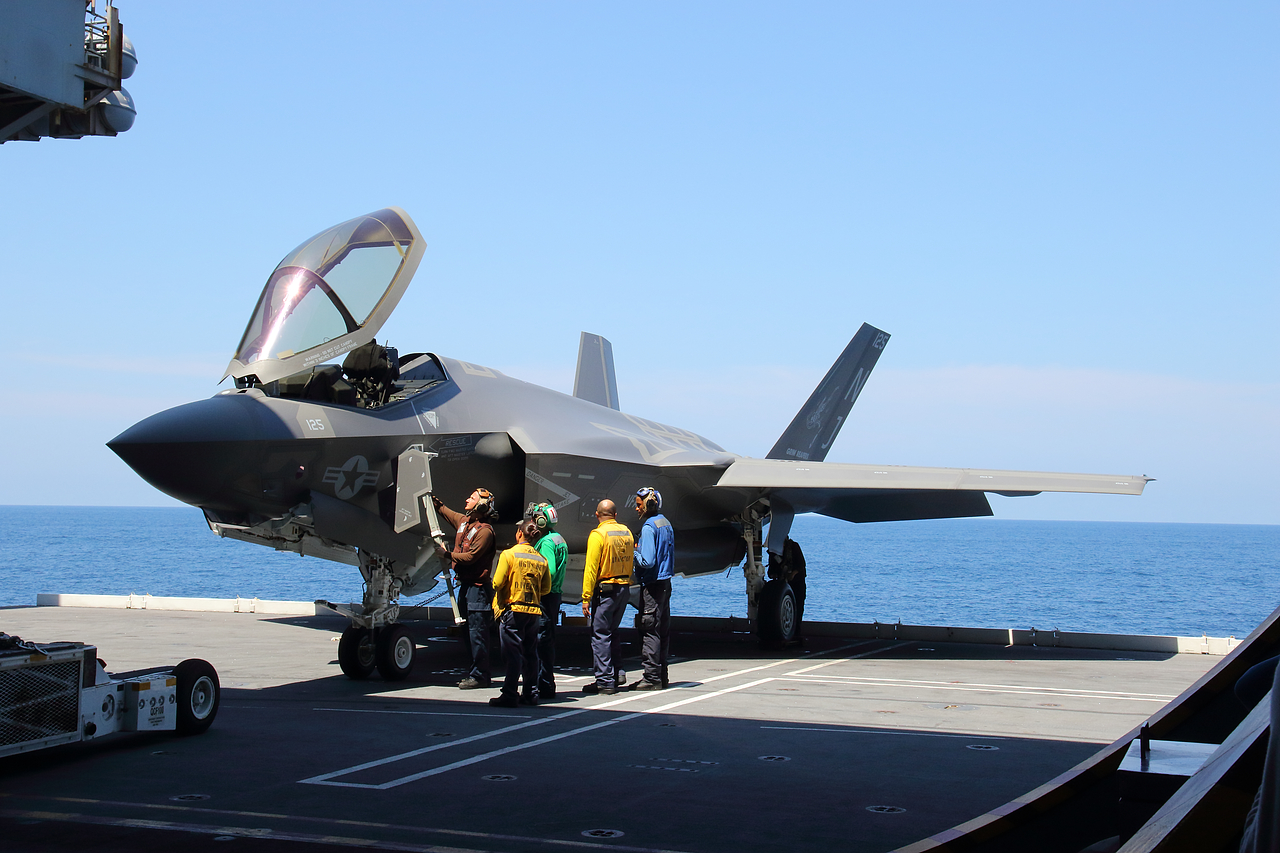

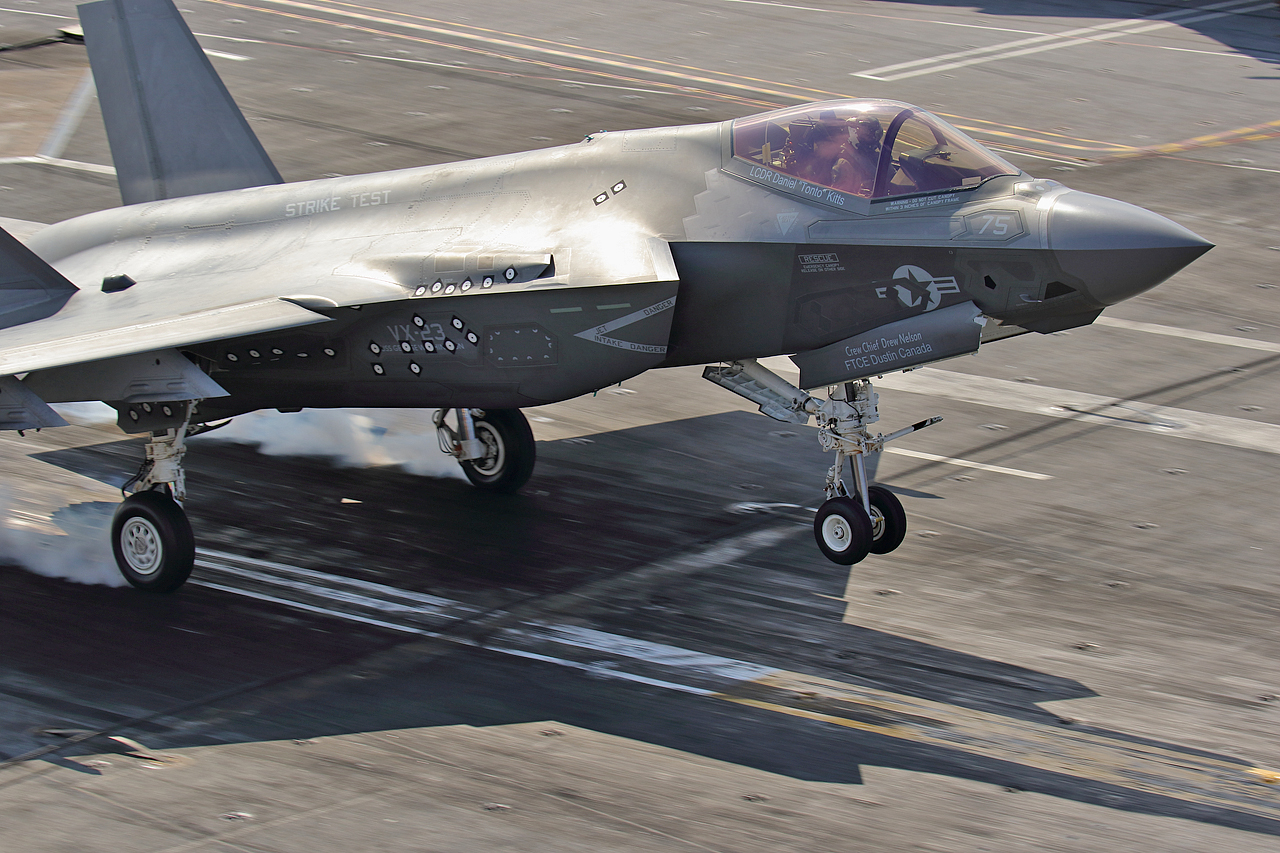
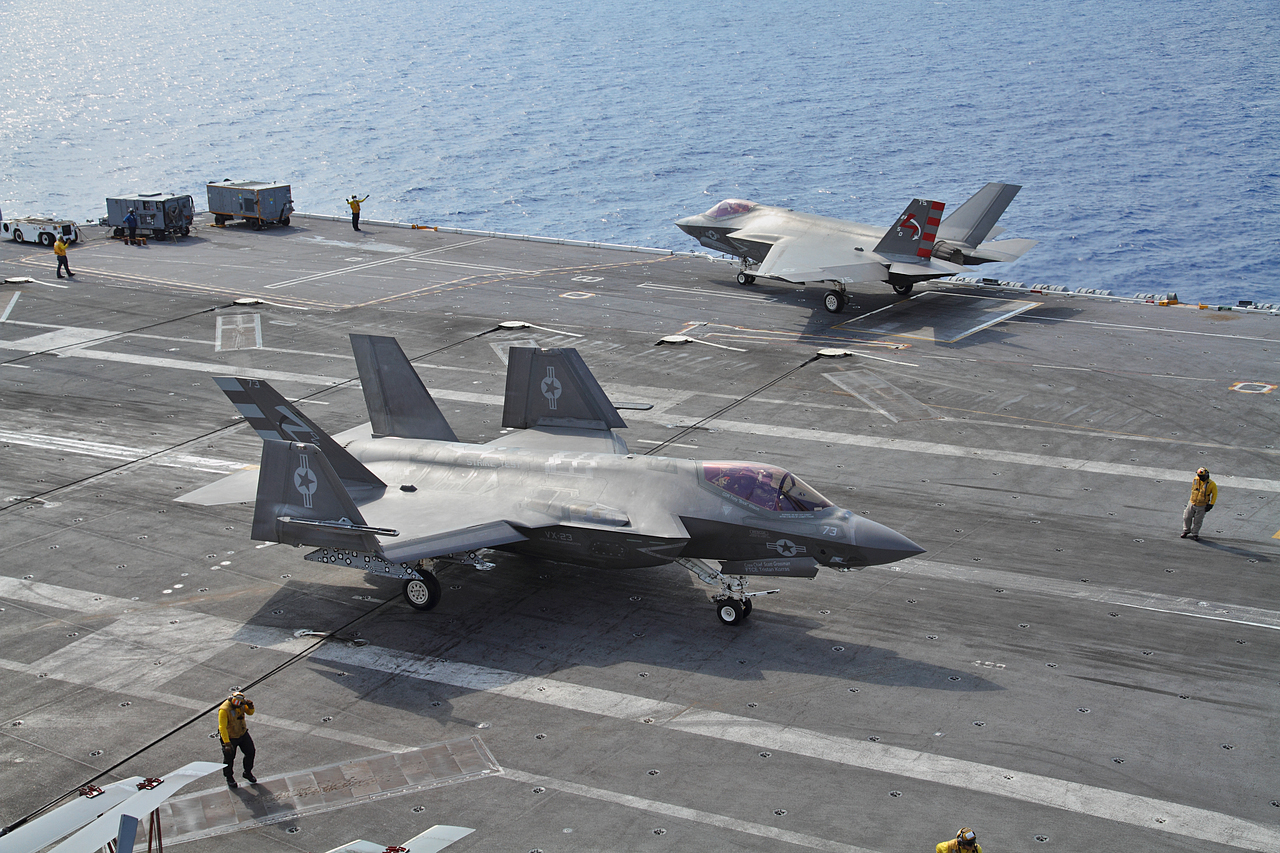
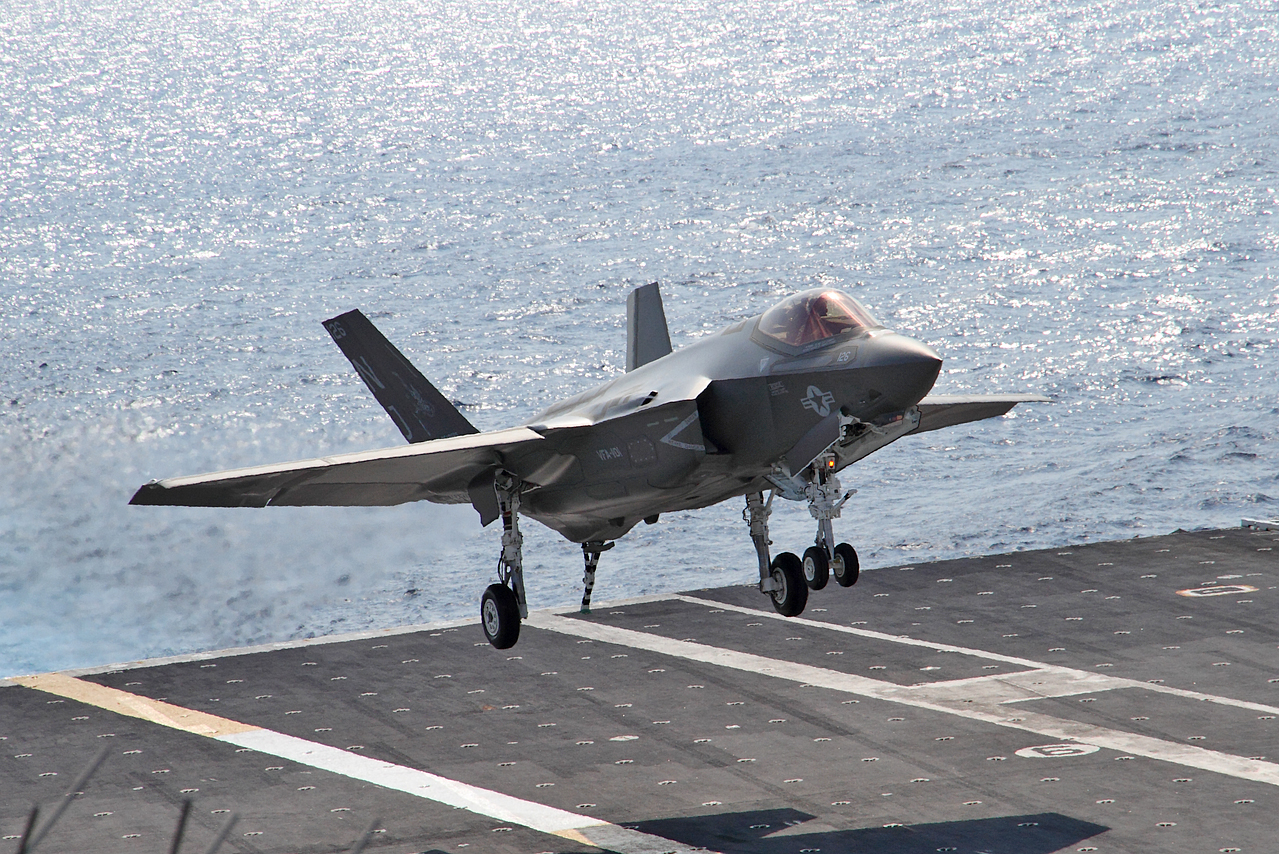
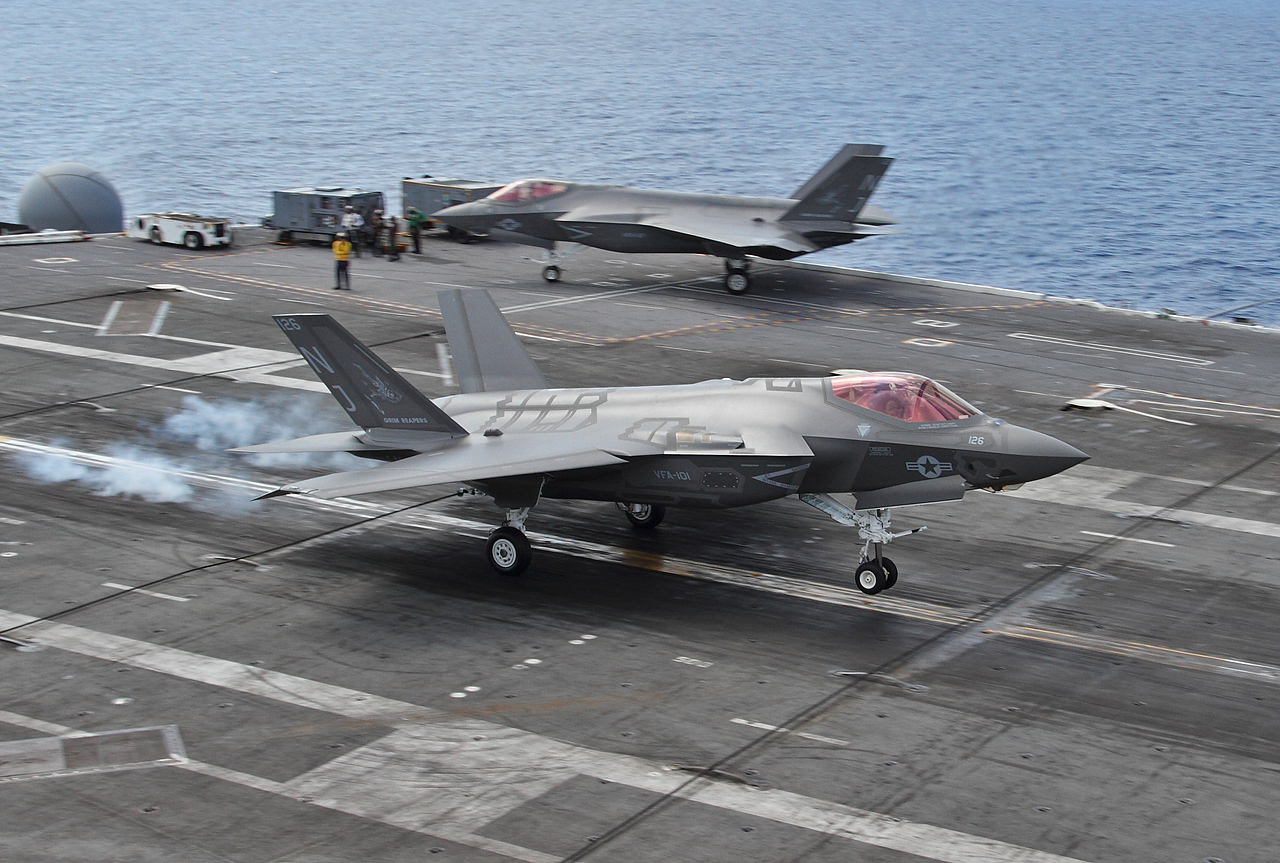
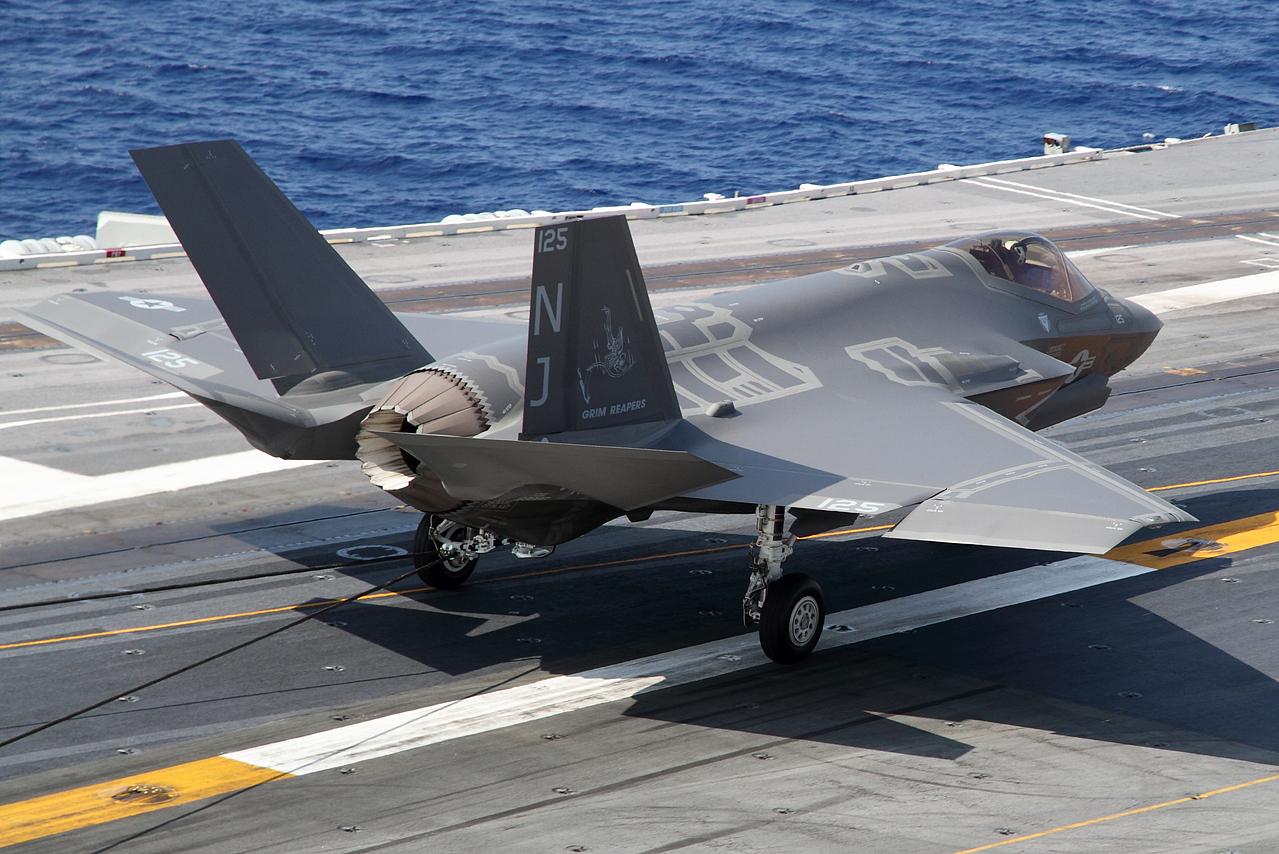
Click on an image below to page or swipe through the gallery:
Isaac Lebowitz is from Long Island, New York. He works as a software developer in the accounting field. He has been involved with photography since receiving a fully manual SLR as a teen. Having a keen interest in aviation and motorsports, he spent much time shooting both. His primary aviation focus is on military aviation photography, although a day spotting at JFK is a real treat. He also enjoys macro, night and HDR photography.
Isaac can be reached at: [email protected]


